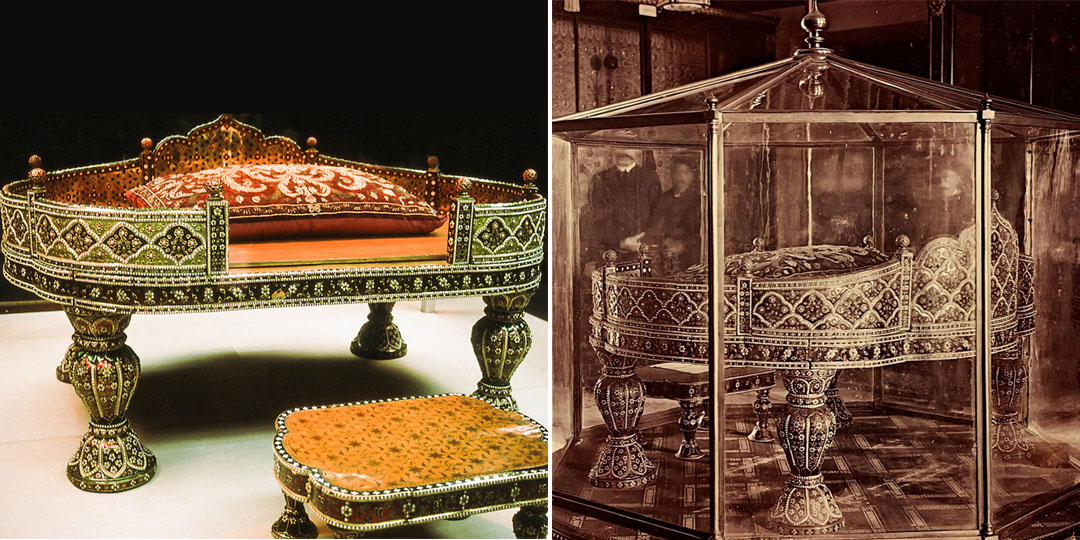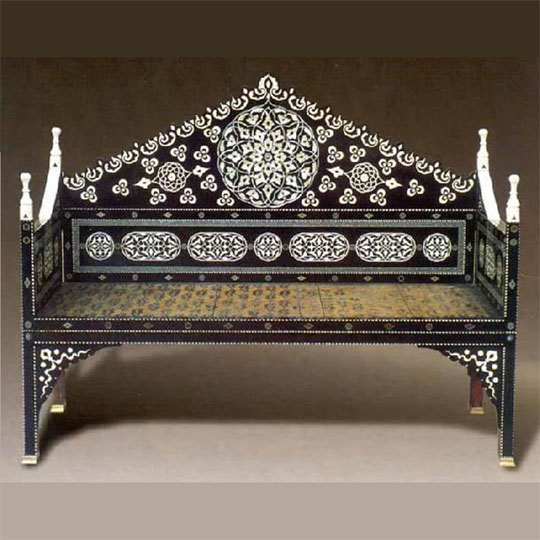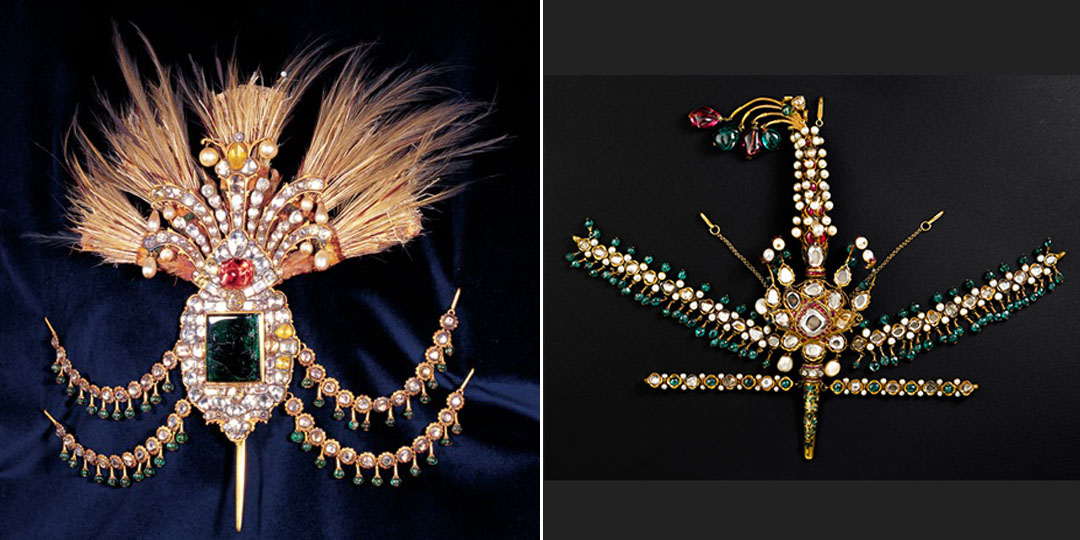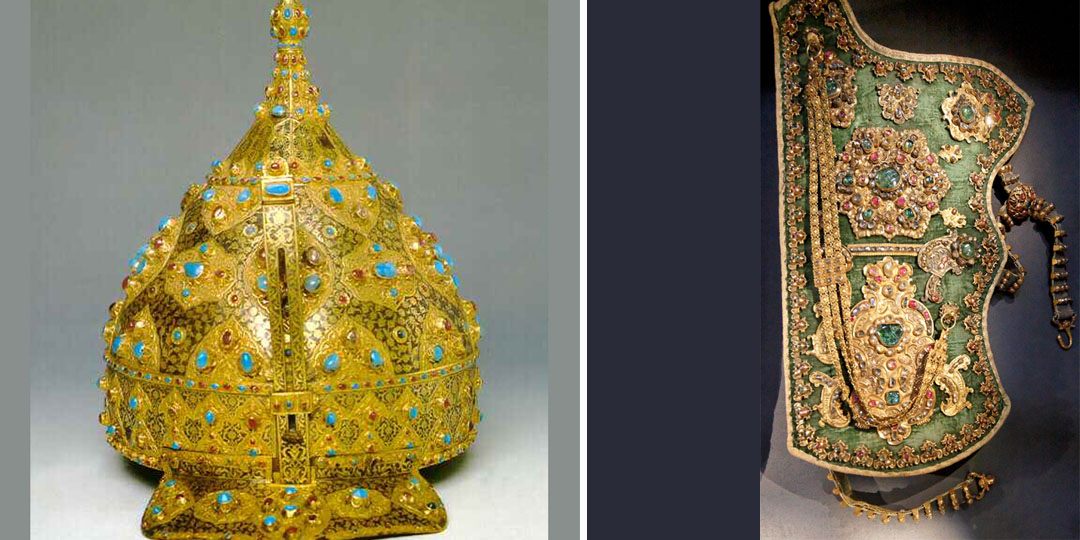Let’s virtually travel to Topkapi Palace Museum in Turkey, to witness Ottoman Empire’s elaborate jewels and objects.

After the conquest of Istanbul in 1453, the construction of Topkapi Palace started in 1460 by Ottoman Sultan Fatih Sultan Mehmet and it took nearly 18 years to complete. The palace became the administrative, educational and artistic centre of the Sultans of the Ottoman Empire for nearly four hundred years. It was given the name Topkapi, meaning Cannon Gate, in the 19th century, after the founding of the Republic of Turkey in 1924 and was converted into a museum Topkapi Palace.

Let’s open the doors of treasury with the Yavuz Sultan Selim Seal, used for sealing the Ottoman interior treasure for centuries. It bears the inscription “Sultan Selim Shah, submission alas” which translates to I put my trust in my creator. The story goes, Yavuz Sultan Selim said, “If one of my grandchildren can fill this treasury, he should seal it with his seal otherwise the Treasury of the empire shall be sealed with mine.” And since none of his successors were able to fill the treasury as he did, the door was always sealed with Selim I’s seal until the Topkapi Palace was converted into a museum in 1924.
The Throne at Topkapi Palace Museum
The Ottoman Empire was ruled by 36 different Sultans for over 600 years. Lets virtually witness a few of the Ottoman Sultan’s Throne:
Nader Shah Throne

This lavish throne, housed in the Topkapi Palace Museum was given by Nader Shah (1688-1747) of Persia to the Ottoman Sultan Mahmud I (1696-1754) around 1739.
The story goes, that when Nader Shah decided to go on a campaign against the Ottomans, he realised it would be more profitable to stay on good terms with them. In 1746 both the parties signed a peace treaty and to celebrate this peace the two sides decided to send each other valuable gifts. This gold throne is embellished and decorated with huge pearls, emeralds ruby and other gemstones.
The craftsmanship and beauty of this piece is awe-inspiring, isn’t it? Let me know in the comments.
The Throne of Ahmed I

This 17th-century throne belonging to Sultan Ahmed I is made in the form of a baldachin and crowned with a dome. The throne is made of walnut wood, with its entire surface decorated with a mosaic of mother-of-pearl and tortoiseshell. The vegetal decoration of floral motifs is a great example of Ottoman art achieved during the 11th/17th century. The throne has an emerald and gold pendant hanging down in the middle of the dome and at the very top of the dome, we can see a clock case in the form of a lantern.
The Gold Festival Throne

This throne was used for festival ceremonies in the Ottoman Palace. In 1585, the Ottoman sultan Murad III was gifted a magnificent throne made of gold-plated walnut wood and studded with peridot. The throne has a pendant with three hexagonal emeralds hanging from the backside. The throne could be dismantled into ten separate parts and it travelled along with Sultan.
Suleiman the Magnificent’s Throne

16th century is crafted with mother-of-pearl inlays. Turquoise is embedded in the middle of the back of the throne, as it’s believed to have protected the Sultan against evil.
Hanging Ornaments
Did you notice the hanging ornaments over the Sultans throne?
Well, let me share their significance.

The Jewelled hanging ornaments, over the Sultans throne or the threshold/ceiling/dome of the rooms used by Sultans, were regarded as a symbol of sovereignty.
Shared above are a few examples of the hanging ornaments displayed of the 18-19 century displayed at Topkapi Palace Museum
It’s always fascinating to learn about different significances and cultures, isn’t it?
Turban Ornaments

The turban ornaments called sorguç, were worn by Ottoman Sultans on their turban. These ornaments are a symbol of power and authority. It is believed that each Sutan wore three sorguçs and when they died, these sorguçs were placed on the quilted turban in front of their tomb.
Spoonmaker’s Diamond

The 17th-century, 86cts pear-shaped Spoonmaker’s Diamond (Turkish: Kaşıkçı Elması) is one of the most valuable exhibits at the Topkapi Palace; it is considered the fourth largest diamond of its kind in the world. The diamond is set in silver and surrounded by a double row of 49 old-mine cut diamonds
The story goes, that the diamond was discovered in a trash dump by a man in Eğrikapı, unaware of its value, the diamond passed through many hands and finally ended its journey at the Topkapı Palace around the 17th century.
Armour of Sultan Mustafa III
Armour, is one of the most important adornments used, to protect the wearer from archers and the long swords of opponents.

Featured above is the 18th century Ceremonial Armour of Sultan Mustafa III decorated with gold and encrusted with gemstones.
Ceremonial Helmet & Quiver

Jewelled and gold-inlaid Ceremonial Helmet made in the mid-sixteenth century, consists of a rounded bowl with ear flaps, a peak with a sliding nose guard passing through it, and an extension in the back to protect the neck. The outside of the helmet is embedded with Turquoise and Ruby; and the inside is covered with red fabric, woven from fine silk.
Topkapi Dagger
The 18 century Topkapi Dagger was commissioned by Sultan Mahmut I in 1747 as a diplomatic gift for Nadir Shah of Persia. But, since Nader Shah was assassinated before the gifts could reach him, the dagger was returned to the Topkapi Palace.

The handle of the dagger is encrusted with three cabochon emeralds. The upper and lower emeralds have an identical pear-shaped cut with similar sizes and set with their pointed ends facing each other. The middle emerald is a rectangular cushion-cut stone and at the end of the handle is an octagonal-shaped emerald, set as a cover, which when opened revealed a small watch. The backside of the handle is crafted in enamel work and mother-of-pearls.
Such magnificent gifts are a treat! Now, we won’t mind something like this, right? Let me know in the comment.
Women Jewel’s
Did you notice until now we have only seen jewels adorned by the Ottoman Sultans? Topkapi Palace Museum has more jewels adorned by the male members as compared to women; because men were considered the most important members in the palace. Women were restricted to interact with only the members of their family and were confided to “The Imperial Harem” defined as women’s quarter in a Muslim household.

Featured above is Bridal Headpin, 1875; and a 17th-18th century necklace.
Topkapi Palace Clock
The Topkapi Palace Clock Section is currently home to one of the world’s rarest mechanical clock collections of appx 380 clocks pieces gathered over 400 years from Europe during the Ottoman Empire dynasty. The earliest Turkish clocks are dated to the 17th century and are fine examples of the craftsmanship of the period.

Time is proof that the world of gems and jewellery is endless and beautiful!
Objects and Artefacts
Several 16-17 century household utility items such as Flask, Candle Stand, Ewer, Coffee Cups belonging to the Ottoman Empire were studded with the most expensive of gems such as diamonds, emeralds, pearls and turquoise to name a few.

Sixteenth-century being the Golden Age of artistic creation in the Ottoman Empire; it was a time when the Empire was at the peak of its power. During this time most colourful gemstones were embellished asymmetrically and in their natural form on objects.
With this, we wrap the article, hope you all enjoyed a virtual tour of the Topkapi Museum, let me know how did you find the Ottoman Sultans treasury.
Credit: Topkapi Sarayi
Disclaimer: The above images belong to their respective sources, where rights may be held. Usage here is for information/reference purpose only.
